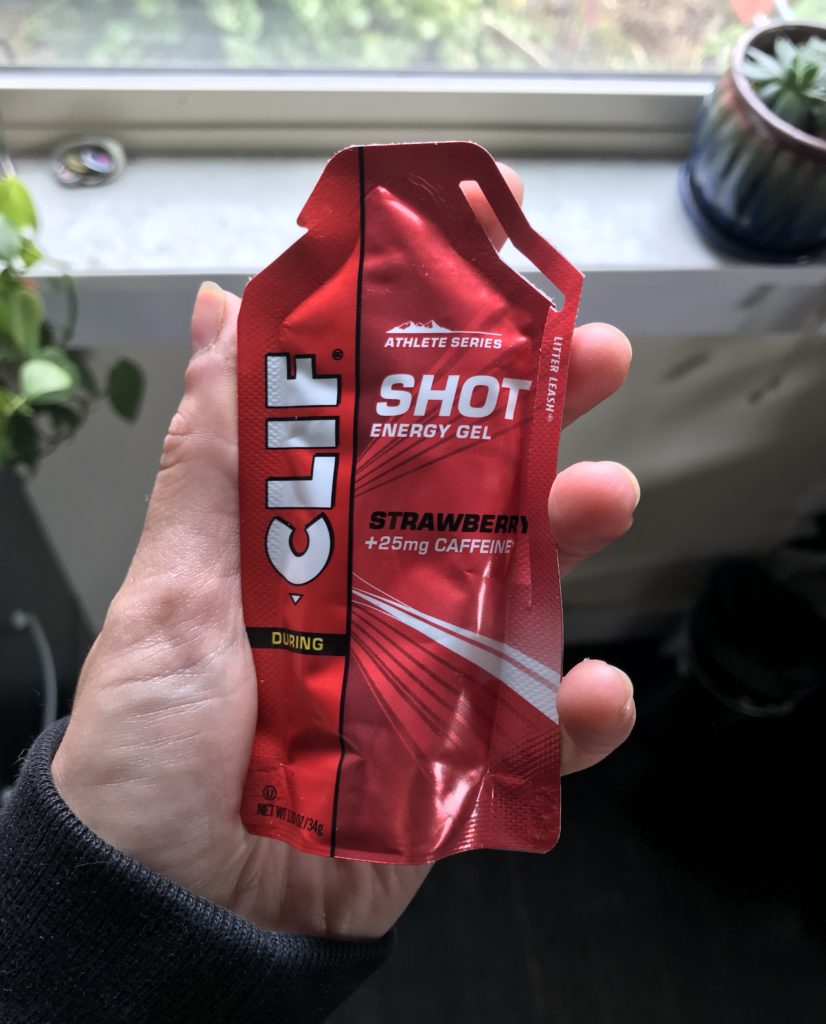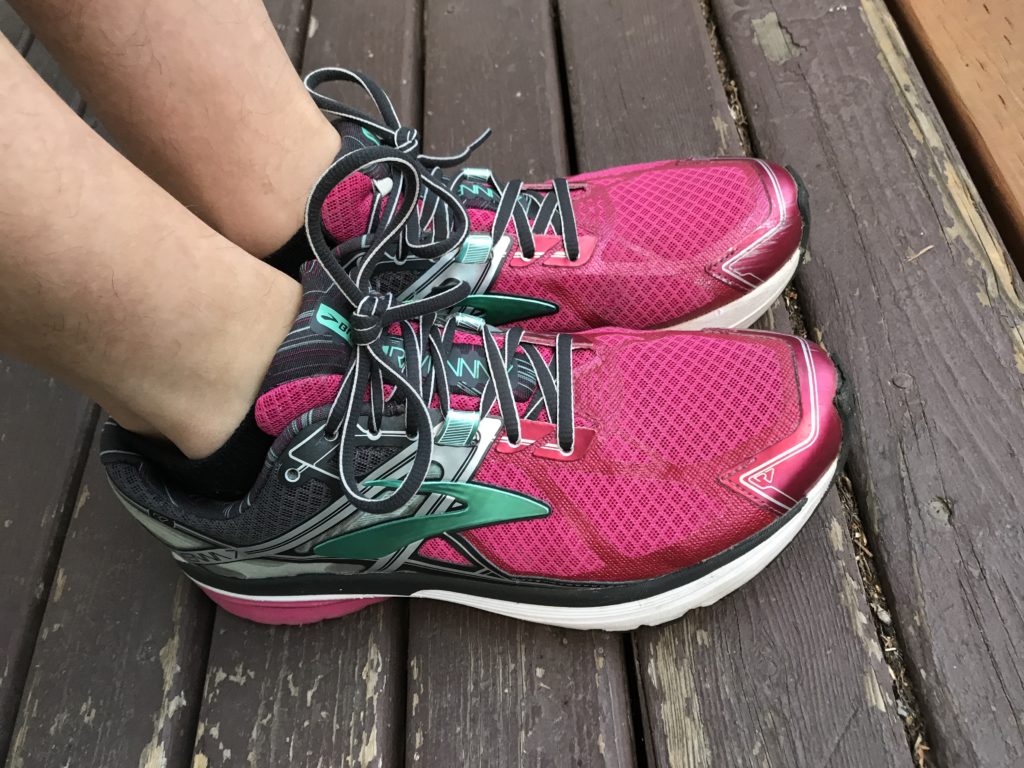Running yet another marathon and how I do it

Recently I signed up for a fourth marathon. I ran my first marathon in 2008, and it wasn’t until 2016 that I ran my second. My third was run last November, and now training has started for the fourth. It’s no secret that I love running. I never thought I’d be the kind of person who runs multiple marathons, but that’s where we’re at now. It’s one of those things I live for: running in a meditative state and watching the world go by, followed by the most exquisite endorphin high that no drug can ever measure up to. It’s really the best.
Running a half-marathon is easy; I think that most people can do it. Those 13.1 miles are a friendly distance. Running a full marathon, however, requires more time and commitment, but it can be done.
Tell me all of your running secrets!
If you want to know my secrets to successfully finishing a marathon, you may be pleased to find that there is no secret! It’s hard work, a lot of self-care, plenty of rest, and good sleep. Plus moral support helps, as does a can-do attitude.
(As a full disclaimer, I will say that this is not intended to be medical advice. Always see a doctor before starting any training program. Here, I’m sharing what worked for me.)
Training programs

The training program I use is formulated by Hal Higdon, a running legend who has done more than 100 marathons! The website shows 18-week training programs for all levels, from novice to advanced. Usually the novice is good for many; advanced levels are more for Olympics training and the like. You’ll need to be able to run six miles before starting training under the Novice program. Also, you don’t need to pay to use the programs. I just write the mileages in my calendar and go from there. Or just print out the tables and write dates on them.
For my first marathon, I ran with a team, which supplied a 6-month training program and moral support. Running with a team will help you get through the finish line. For my second race, I searched for the program that looked the most familiar to the first. Hal Higdon’s programs are foolproof, and I keep going back to them. For the third marathon, I upped it a notch by choosing the first Intermediate level. Perhaps that is my limit, because a knee injury resulted, which dampened my performance.
The knee pain still creeps up like a whisper saying, “hey, I’m still here.” So, this time I will lean more towards the Marathon 3 training program, where there’s more cross-training and rest. But it’s far from easy. Running three 20-mile runs at peak training sure is a lot. I got this.
But where do you get your protein?
Diet is something I get questioned on a lot. The vegan diet is beautiful, nutritious, and delicious, and it utilizes every calorie to help you cross the finish line. I have always run marathons on a vegan diet and can speak from experience how strong it makes me feel.
Runners rely more on carbohydrates such as pasta, rice, and bread, as a source of fuel. The protein part is good for rebuilding muscles after strength training, but runners don’t always do that. A lot of bread and pasta already have lots of protein in them; a single serving of noodles contains as much as 7-9 grams. It’s a good source.
The meat and dairy industries do a great job of selling marketing hype that we don’t get enough protein and calcium, and that the only way to get those needs met is to consume more. If you really pay attention to how much you eat, chances are that you are getting enough, especially on a vegan diet. All those fruits, veggies, legumes, nuts, and healthy fats supply enough vitamins, minerals, and of course, protein to fuel your performance.
As for how much to eat, I don’t count calories. I just keep eating until my body feels like it has had enough. In general, I eat more than most people, since that metabolism is constantly humming. I will stress that you do not want to diet during this time, because your body needs extra calories in order to gain more endurance. During peak training, I consume least 4,000 calories during the day of long runs. Your needs might be different. Listen to your body.

Starting on longer runs (at least 10 miles), I consume Clif energy gels midway through the run. (Followed by water, of course.) Any kind of vegan energy gel will work in order to replace what has been burned through. Some have caffeine for an extra kick. This time, I might even bring easy snacks for extra calories, especially during the longer runs. I didn’t always do that before.
During the longer runs, you may notice a flaky white substance on your skin. That is salt that has been sweated out, so it must be replaced in order to maintain your system’s electrolytes. I tend to eat food where I can taste the salt. That’s the advice given to me during training for the first marathon. It seems to work.
As always, drink lots of water. A fuel belt is around my waist during the longer runs. I know where all the water fountains are along the routes, so that I can refill as necessary.
Run until your feet bleed (maybe)

Shoes are a subjective subject. What I did was go to my old coach’s running store to see what kind of shoes might work best for me. Coach made me run on the treadmill for a few minutes while he analyzed my form and listened to my concerns about frequent shin splints. Now I use Brooks Ravenna shoes with Spenco inserts and haven’t had the shin splints since! The models have evolved some over the years, but it’s been reliable and my go-to. If you need better shoes, try getting your running form and measurements analyzed by a running professional. A good pair of shoes makes all the difference.
I don’t have experience with managing blisters. My toenails are usually intact, so they don’t fall off.
Cotton is rotten
When you sign up for enough races, you’ll accumulate technical shirts as race swag. Those shirts are designed to help with ventilation and cooling your body, especially when it gets warmer out. Wearing cotton holds onto moisture, which gets stuck in the fabric. It feels gross, plus it’s not breathable. Wear running clothes that have breathable fabric technology. They’re a little more expensive, but it will make the experience all the more pleasant.
Other things to remember
Sleep
Sleep is very important when training. When you’re training, you will need enough rest, because it gives your body a chance to catch up. After every long run, you may want a nap. And you should take it! Running isn’t just a physical endeavor; it’s also a psychological one. When you get enough sleep, it’s not only your body that is repairing itself. Your mind also needs to process what you’re putting it through. With enough sleep, you will perform better. It’s a no-brainer, so remember to be good to yourself.
Stretching
This is something that I struggle with. It just doesn’t occurs to me to stretch, but that has been changing lately. Sometimes I’ll take stretching breaks when I’m working. These are stretches I’ve done during cross-country practice in high school and even during marathon training with the team. They seem to work.
Redirecting your focus
I used to think that meditation is for new-age types; it just seemed so out there. The saying, “don’t knock it until you’ve tried it” applies here as well. Focusing on the breath instead of free-falling in thought has helped me stay centered along the course. When mental energy is redirected into the body, it is more sustained. What I’ve learned is that anxiety is energy that is often wasted or lost; I’ve been learning that channeling it back into the body does help me go stronger longer.
And most importantly…

Finally, a strong attitude on crossing the finish line is a must. You need clear reasons on why you want to finish a marathon. Saying, “why not?” isn’t enough. The journey will give plenty of reasons on why not. As I mentioned before, running a marathon isn’t just physical; it’s more psychological. There will be times where you wonder why you signed up in the first place. Maybe some loved ones may try to talk you out of it, out of concern. So, this is something you must be sure that you want. But remember to be kind to yourself. Then find your support network to get you through the whole experience. Maybe you can train on your own, but you don’t have to. Just find reasons why you want to finish, and the rest will follow. And once you’ve joined the 26.2 club, you’re in it for life.
Leave a comment